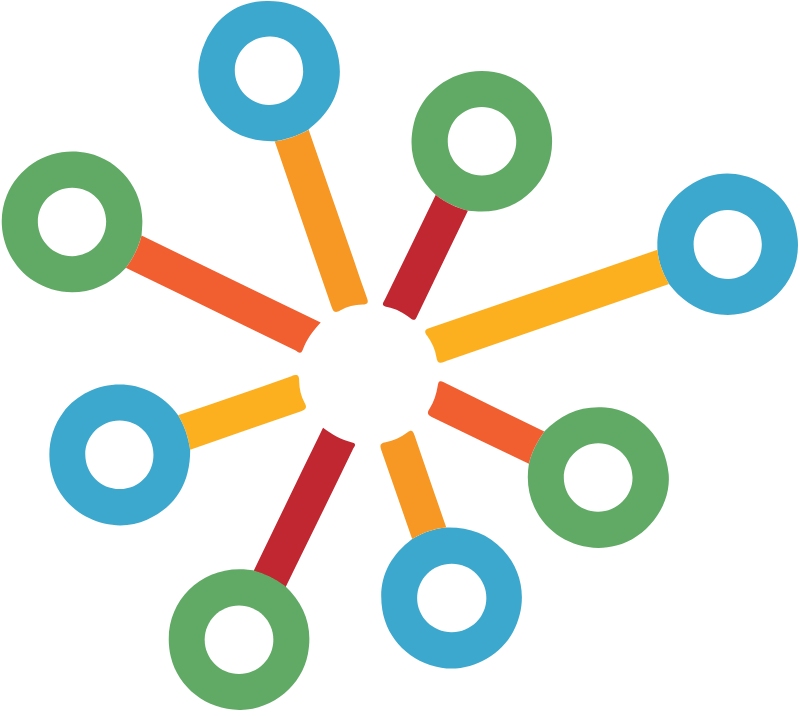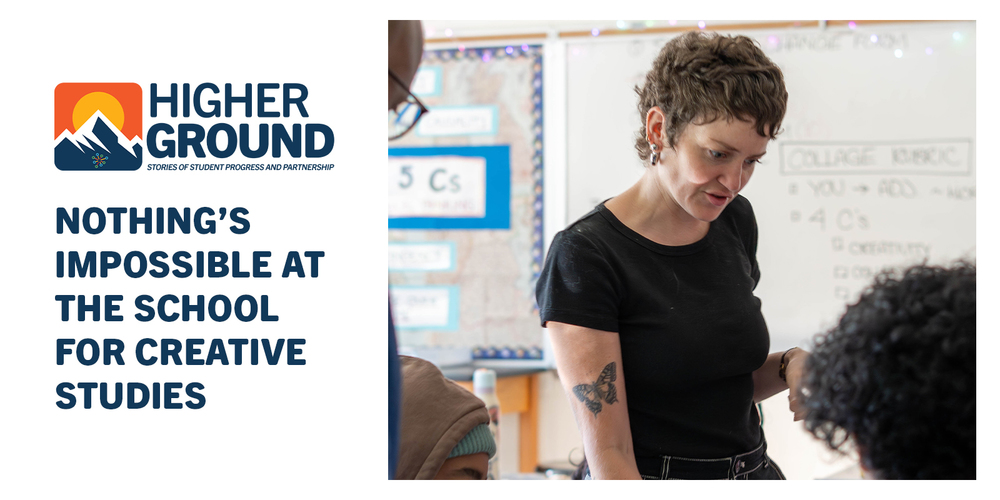At the School for Creative Studies (SCS), the school’s vision, “There is no box” is a mindset and an expectation. It’s what drives teachers, administrators, and counselors to push past limitations, think creatively, and believe that every student can grow and succeed. And it’s precisely why the students exceeded growth last year and teachers and administrators plan to do it again next year.
Filling the Gaps
When federal ESSER funds expired after the 2022–2023 school year, many schools faced the question of how to sustain academic support without the same financial cushion. For SCS, that challenge sparked innovation.
“We had to think outside the box,” said Principal Chaundra Clay. “Last year, we started an intervention block for high school students. We’d always done it for middle school, but this time we were intentional about using that time consistently throughout the year — not just the last two weeks before testing. Doing it throughout made a difference for us.”
Math teacher Nefretiri Bowman said, the “seminar” intervention block allows teachers to meet students where they are, address skill gaps early, and build confidence before exams. Despite challenges students may be having with material and instruction, Bowman tells her students that “it’s very possible to pass this test.”
It’s evident that not only do the students believe in themselves and their teachers, but that the School for Creative Studies is intentional about making it happen.
Data, Goals, and Heart Work
At SCS, instruction is guided by data — but powered by relationships. Teachers use goal sheets, trackers, and Common District Assessments (CDAs) to monitor progress and tailor lessons to student needs. The assessments approved by administration and used by teachers, called iReady and Reading Plus, provide weekly diagnostics in math and reading to help them to accurately pinpoint where students need support.
Still, Principal Clay emphasizes that numbers alone don’t change outcomes — people do.
“You have to be inspirational,” Clay said. “I’m fortunate to have staff who can motivate beyond the textbook, beyond what they see online. She’s (Ms. Bowman) one of my star teachers who has a way of explaining a math problem in a way that provides them a real-world connection and it matters. It helps them grasp what they are learning so they can use it in the future, and that’s key to their success.”
Bowman agrees: “It’s also the relationships that you build with the students as well. If they like you, they’re going to try their best to make sure that you’re proud of them. I let the students know all the time that I’m proud of you, you did a great job.”
She said her students tell her how much they need to hear that.
The Power of a Unified Team
Assistant Principal Shaunte’ Bridges said for the SCS leadership team, success begins with building teacher capacity and intentional use of instructional time. Teachers engage in one-on-one conversations with administrators about data, flexible grouping, and re-teaching strategies.
“Flexible grouping means kids move in and out depending on where they need more time,” said Bridges. “It’s about responding to what the data tells us — reteaching, reassessing, and incentivizing growth.” She notes that they are attuned to the need for more time that students may have due to obstacles and trials they may encounter at home or in their communities. “But we’re all here to support.”
To that end, Principal Clay said Counselor Karen Rankins–Hinton plays a major role in the school’s success because that same collaborative mindset extends beyond academics.
“The students and teachers love Ms. Rankins. She might not instruct a core class, but trust me, it goes a long way when she can give a teacher a heads up about what may be happening at home and what may not. It truly is about the whole child and having those wraparound services.”
Culture of Care and High Expectations
At SCS, high expectations are matched with compassion. “Keep the main thing the main thing,” Clay said. “We’re here to make a difference in our students’ lives — to keep them safe, educate them, and believe in them. While they’re here, they’re going to do school. We can modify the day, but learning is non-negotiable.”
The school’s counselor underscores that philosophy by helping students design schedules that set them up for success. “We empower students through scheduling,” she explained. “If you’re not a morning person, maybe math isn’t your first class. That flexibility makes a difference.”
Beyond the Grade: A Culture of Growth
When news arrived that SCS had exceeded growth on state measures, Clay said she was emotional. “I literally cried. It was a rough year — we were doing without a lot of things — but we had the right mindset. Our students were going to achieve regardless. There is no box. There’s nothing we won’t do, within the confines of the law, to make sure our students are successful.”
Bridges echoed that sentiment: “There’s a willingness among our staff — whatever it takes, they’ll do it. It takes the whole school for the whole child.”
SCS lives by the Four Cs, in this order: Creativity, Collaboration, Community, and Communication. Clay says this shared belief continues to shape its culture.
Striving Forward
“Durham Public Schools is resource-rich,” Clay adds. “It doesn’t matter what kids bring with them or what’s happening outside of school — from 8 to 3:30, we can make an impact. We continue to strive.”
As SCS eyes its next goal — earning a “B” school rating — staff remain grounded in purpose, guided by data, and fueled by heart.
At SCS, nothing’s impossible and no one’s exempt— not when an entire community believes it’s possible.

